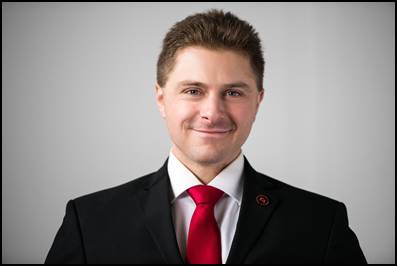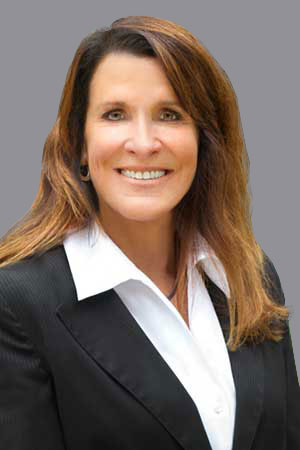



Karen Yasukawa,CIMA (r), AIF (r) is the Senior Vice President, Investments and Senior Institution Consultant at The Kikawa Group of Raymond James and an active, committed member of the Retirement Advisor Council. She understands firsthand the importance of advancing the financial wellness and literacy of all Americans --especially in her home state of Hawaii. Ms. Yasukawa believes that being financially literate is in a way like speaking another language-- it must be taught consistently over time beginning with financial literacy programs being developed and deployed in our schools and communities. The Financial Literacy Committee developed FinLitFuture$ to advance that goal.
Ms. Yasukawa recently brought this article published by InvestmentNews, reporting on the results of a new survey by Corporate Insight and the SPARK Institute with compelling data on the financial literacy gap in young Americans as they move into the workforce.
Read the full article HERE
 This program began as a personal endeavor for me. When my son Greg, now 30, was a senior at Boston College High School in 2012, I joined the initial Credit for Life Committee. Recognizing the need for financial education in schools, we created an initiative that has since evolved significantly.
This program began as a personal endeavor for me. When my son Greg, now 30, was a senior at Boston College High School in 2012, I joined the initial Credit for Life Committee. Recognizing the need for financial education in schools, we created an initiative that has since evolved significantly.
Credit for Life is part of the Student Financial Education Initiative, Inc. (SFEI), a 501(c)(3) organization in Massachusetts. SFEI promotes experiential financial education in local schools and communities, supported by community banks and nonprofit foundations. They operate the online platform www.creditforlife.org, offering tools and modules for virtual or in-person budgeting and financial learning.
Originally, we conducted a morning session for the entire senior class at Boston College High, with class sizes ranging from 280 to 325 students. Held in the gym, each student goes through a budget-making process, receiving a packet outlining their annual income, credit score, credit card balance, student loan balance, and tax deductions. They must then sign up for required categories and consult with a credit couns elor when facing budget issues. Many students realize the practicality of switching from a $700-a-month BMW to a $235-a-month VW!
elor when facing budget issues. Many students realize the practicality of switching from a $700-a-month BMW to a $235-a-month VW!
The program is supported by about 75 volunteers, including parents, alumni, and bankers. Due to student feedback, we expanded to include afternoon sessions, where two other committee members and I host 45-minute classes. The senior class is divided into three groups that rotate through sessions covering the Ten Commandments of finances, basic investing terms, and a deep dive into credit cards, student loans, and college preparedness. Using my own children's experiences as examples creates an immediate connection with the students.
 Although we paused from 2020 to 2022 due to COVID-19, the program has run every year since 2012.
Although we paused from 2020 to 2022 due to COVID-19, the program has run every year since 2012.
I've also presented at other schools, such as Notre Dame Academy, an all-girls Catholic school in Hingham, where I give a 30-minute presentation to about 125 seniors. I cover the Rule of 72, compounding, long-term investing, and basic credit card pros and cons. Impressively, all graduates from BC High and NDA are college-bound.
For the past three years, I've spoken to the entire senior class at Hingham High School. Initially, we ran a shorter version of the BC High program, but the past two years, due to contract negotiations, I was the sole speaker in the auditorium. The senior class of over 300 is usually 90% college-bound, and I cover paycheck analysis, basic tax filing, credit cards, auto loans, and more.
In the spring of 2023, I taught two sections of a business teacher’s class, which included students from grades 9-12. The curriculum was more sophisticated, covering both the positive and negative aspects of compounding and reviewing the Investment Company of America guide.
Lastly, I've taught two classes a year for three years at Cristo Rey High School in Boston’s Savin Hill. These students are disadvantaged and 100% go on to college as first-time attendees in their families. I cover the same topics as I do at other schools.
My journey with Credit for Life has been incredibly rewarding. It’s amazing to see these young people embrace financial knowledge and prepare to apply it in their adult lives.
The following is reprint of an article published in Plan Sponsor Magazine. Lisa Buffington, Retirement Advisor Member is featured.

“We need to help Californians prepare for their financial futures as early as possible,” said Newsom in a statement. “Saving for the future, making investments, and spending wisely are lifelong skills that young adults need to learn before they start their careers, not after.”  Lisa Buffington, vice president of retirement services at Marsh McLennan Agency New England, said California adding financial literacy as a requirement to graduate high school is “great,” but the mandate will only be effective if the state provides teachers resources to support executing the curriculum.
Lisa Buffington, vice president of retirement services at Marsh McLennan Agency New England, said California adding financial literacy as a requirement to graduate high school is “great,” but the mandate will only be effective if the state provides teachers resources to support executing the curriculum.
“The implementation [and] the roadway for getting the programs up and running is a long one, so there’s a lot of work we can do to support efforts in the meantime,” she says.
Research by the American College of Financial Services published earlier this year found many retirees do not understand the concepts of retirement income and longevity risk. Research by the Government Accountability Office in 2023 found that improved financial literacy could be key to closing the country’s racial wealth and retirement savings gaps.
There so many ways to volunteer other than by committing to a full day. Junior Achievement for example, has other programs that ask for a commitment of one hour per week for 6-8 weeks. So many ways for the community to get involved in this very important initiative… driving financial awareness for our future generations of leaders.
Next Gen Personal Finance reports that the number of states requiring a stand-alone personal finance course for all high schoolers reached 26 this year, up from eight in 2020.
Buffington is “encouraged” by states adding financial literacy education, but she also calls upon asset management, investing and retirement industry leaders to help. Marshaling professional expertise and resources will support and prepare teachers.
Buffington recommends using resources from the Retirement Advisor Council—a consortium of independent financial advisers that includes product providers and third-party administrators—and collaboration to develop the program, called FinLitFuture$.
“We’re pointing to a couple of vetted curriculums that … we know are being leveraged in schools,” she adds. “They’re K through 12, all the resources are available in English and Spanish, [and] all the resources are broken down across all the major topics that would represent a robust financial literacy program.”
Additional nonprofits favored by Buffington, offering resources are the Securities Industry and Financial Markets Association and Next Gen Personal Finance.
State programs like California’s should be designed to instruct students, supporting individuals to become savvy retirement plan participants at work and to elevate their retirement readiness, says Buffington.
“Our ability to influence stronger retirement outcomes starts with our ability to bring future generations into the workforce already on solid footing from a financial literacy standpoint,” she explains.
State programs requiring basic financial literacy are “moving the needle in a positive way [by] impacting individuals retirement readiness; however, we’re still faced with some significant hurdles in terms of people entering the workplace not necessarily in a savings mindset,” she adds.
California’s move is “significant, and I hope it is a signal for other states as well,” adds Annamaria Lusardi, a senior fellow at the Stanford Graduate School of Business and founder of the Global Financial Literacy Excellence Center.
Pennsylvania and Wisconsin added financial literacy requirements for high school graduation in December 2023, according to Lusardi.
Link to original article is HERE
 By Derek Fiorenza, AIF®, C(k)P®, CPFA, PPC™,
By Derek Fiorenza, AIF®, C(k)P®, CPFA, PPC™,
Co-Founder/COO/CCO
Summit Group Retirement Planners, Inc.
How would you answer these three questions?
(The answers are found at the end of this article.)
Recently the World Economic Forum conducted a study on financial literacy. And they used the three questions above to test financial literacy. They discovered that in the US, financial literacy rates are around 50%. The European Union is also underperforming as well. The World Economic Forum is spearheading the Future of Global Fintech Research Initiative, which is striving to explore lessons that have been learned from public-private efforts to improve financial literacy. Lastly, April is Financial Literacy Month in the US.
There is a robust study conducted with 28 questions given annually to US adults (P-Fin Index). The areas studied are earnings, savings, insurance and comprehension of risk. The results through the years continue to demonstrate that financial literacy has been hovering around 50% for 8 years in a row, and there has been a further decline of 2% over the past two years. The areas where Americans feel more comfortable center around borrowing, saving, and consuming with the area of least comfort being around financial risk.
These questions help to develop a framework for our working knowledge of financial literacy for the majority of individuals. In the 2021 study, under 30% of Americans responded to these three questions accurately. Even more of a concern is that these respondents had confidence of their financial knowledge giving themselves a rating of 5.1 out of 7.
When we shift our attention to the European Union, it also reveals a large financial knowledge gap. One quarter of respondents scored low for their financial knowledge in the 2023 Eurobarometer survey. 18% of these responders scored on the low level of financial literacy. This reveals that this is more of a universal problem, rather than a country specific issue.
As a thoughtful segway, these findings beckon, how can we help to provide financial education and support to the masses? As a retirement plan specialist organization, we work with employers at a macro level to assist with their fiduciary responsibilities such as plan governance and design, investment oversight and monitoring, and ongoing due diligence. We also have an opportunity to serve the employees of such organizations through individual one-on-one and group financial coaching/counseling. This enables us, as retirement plan specialists, to have an understanding of the employees’ financial needs and concerns resulting in our ability to design and share potential solutions for them as they implement these strategies in their daily lives.
Topics covered in the employee training sessions range from investment allocation, to budgeting and debt consolidation. According to Legal Zoom, only 32% of Americans have a will in place. In an article from Yahoo, they found that 59% of Americans want Financial Advice, but most do not know where to find it. These studies show that there not only is a desire but a need for these types of financial counseling services.
There are powerful ways to support employees of a corporation, but what about the many individuals that do not have access to financial literacy training? That is where FinLit Futures can address this need head on and make a dramatic difference. Financial literacy training can be offered by financial advisors, CPAs, Attorneys, Bankers, and other financial professionals to the community outside of the typical professional environment as laid out above.
We can partner with local YMCAs, after school programs, The United Way, and other local regional non-profit organizations to offer financial literacy training. The financial education can be geared to children, adults, families, and individuals that have fallen on hard times in homeless shelters and homes. As we collaborate with other non-profit entities, we could offer pro bono advice and coaching to their constituents. That is part of an initiative we will be spearheading this summer with our local YMCA during their Kids Camp to teach and inform about the basics of budgeting, debt, saving, and investing.
If you would like to learn more about ways to offer financial literacy training in your community, please feel free to reach out to Derek Fiorenza to review goals and strategies to impact your local community.
Answers:
Q1. Simple Interest
“Suppose you had $100 in a savings account and the interest rate was 2% per year. After 5 years, how much do you think you would have in the account if you left the money to grow?”
Q2. Understanding of inflation
“Imagine that the interest rate on your savings account was 1% per year and inflation was 2% per year. After 1 year, would you be able to buy?”
Q3: Understanding of risk diversification
“Do you think that the following statement is true or false? ‘Buying a single company stock usually provides a safer return than a stock mutual fund.’”
References
https://www.weforum.org/agenda/2024/04/financial-literacy-money-education/
https://www.legalzoom.com/articles/estate-planning-statistics
EXCITING NEWS! Financial Advisors and colleagues across the Retirement Industry can earn CE credits associated with their Youth Financial Literacy Education Volunteer efforts. The Retirement Advisor Council and FinLitFuture$ worked with Fi360 (now Broadridge) and Fred Barstein to secure CE credits associated with your AIF, AIFA, C(k)P, ARPC, and ARPS designations. Submit your volunteer efforts here! https://lnkd.in/eTg_Ds5U
hashtagfinancialliteracymatters hashtagfinancialadvisors hashtagAIF hashtagAIFA hashtagCkP hashtagARPC hashtagARPS hashtagretirement

 By Paula Hendrickson, CFP®, C(k)P™, Director Retirement Plan Consulting and Retirement Advisor Council Member
By Paula Hendrickson, CFP®, C(k)P™, Director Retirement Plan Consulting and Retirement Advisor Council Member
I worked for an organization that was passionate about financial literacy for elementary through high school aged children. We created a relationship with Junior Achievement and committed to a specific amount of time to be donated by our employees each year. I volunteered for three years in a row to teach a classroom of children; third, fifth and eight grades. Junior Achievement does a great job of putting together curriculum that is age appropriate and keep the children engaged and learning about finances. From creating efficiencies with manufacturing – an assembly line putting together ball point pens – balancing a checkbook, creating a budget, drafting a business plan to understanding world economies.
It was so rewarding and the letters that I received following that day were so heartwarming. It gave me as much of a sense of accomplishment as winning a large retirement engagement. It was exhausting and I give teachers so much respect for keeping children engaged all day, every day. I only had one day to do it and it was tougher than presenting to the most difficult investment or buying committees.
There so many ways to volunteer other than by committing to a full day. Junior Achievement for example, has other programs that ask for a commitment of one hour per week for 6-8 weeks. So many ways for the community to get involved in this very important initiative… driving financial awareness for our future generations of leaders.